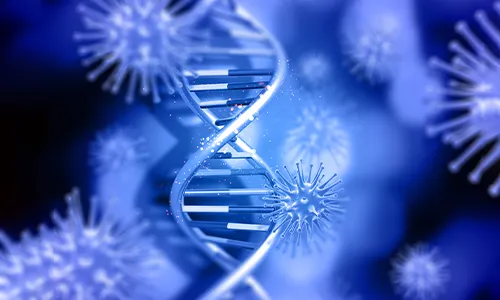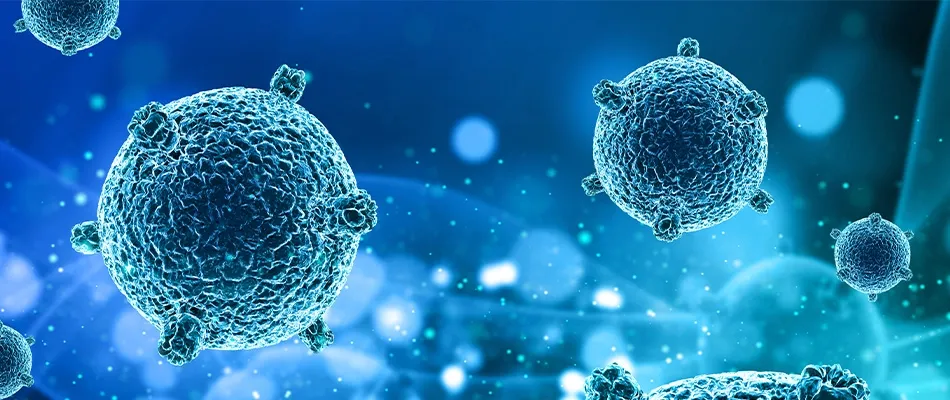- Chemotherapy
- Immunotherapy
- Targeted Therapy
- Palliative Care
- Day Care Centre
- Paxman Scalp Cooling
- Bone Marrow Evaluation
- Lymphapress
- Genetic Counselling
- Home Healthcare
- Clinical Research
- 2nd Opinion Clinic
- Psycho-Oncology
- Multi-Disciplinary Tumor Board-MDT
- Onco Nutrition
- Onco Physiotherapy
- Medical Tourism
- Yoga & Wellbeing
- Patient Support Group
- Crowd Funding


Targeted Therapy
Targeted therapy is a method of cancer treatment that identifies and kills specific cancer cell types. Targeted therapy may be used alone or in conjunction with other forms of therapy, including radiation therapy, surgery, conventional chemotherapy, and immunotherapy. Knowing how it functions and what to anticipate can frequently help you get ready for treatment and make wise decisions about your care if your treatment plan calls for targeted therapy. “Targeted therapy” for cancer focuses on particular proteins that control the growth, proliferation, and spread of cancer cells. Precision medicine is built on this principle. As information about the DNA alterations and proteins that feed cancer grows, researchers are better able to create cancer therapies that target these proteins.
Subtypes of therapy
Targeted therapy comes in a variety of forms. The two most common kinds are monoclonal antibodies and small-molecule drugs.
- Monoclonal antibodies: Therapy work more effectively against cancer cells. Some monoclonal antibodies, albeit not all of them, are thought of as immunotherapies.
- Small-molecule medicines: These compounds have the power to stop the growth and spread of cancer cells. This type of specialized therapy also includes angiogenesis inhibitors. The development of new blood vessels occurs through the angiogenesis process. Tumors require blood vessels to carry nutrients to them. By stopping the development of new blood vessels in the tissue around the tumor, angiogenesis inhibitors limit the growth of the tumor.
Some of the Cancers treated with targeted therapy :
The investigation of numerous new targets and medications is being done through clinical trials by researchers in the quickly expanding field of targeted treatments for cancer.
A few current instances of targeted treatments are provided below.
- Breast Cancer – Human epidermal growth factor receptor 2 is a protein that is overexpressed in 20% to 25% of breast tumors (HER2). There are numerous alternatives for targeted therapy if the malignancy is HER2-positive.
- Chronic myeloid leukemia (CML) – A gene known as BCR-ABL, which forms in nearly all chronic myeloid leukemia cases, is what causes the disease. Normal myeloid cells start acting like cancer cells as a result of this protein.
- Lung Cancer – The pace of scientific research is causing a rapid change in targeted therapy for lung cancer. Numerous targeted treatments are accepted to treat non-small cell lung cancer (NSCLC). Many others like colorectal cancer, kidney cancer, hepatocellular cancer, uterine cancer, thyroid cancer, etc also harbor protein alterations that can be treated with targeted therapy.
Benefits of Targeted Therapy
- Aid the immune system in eliminating cancerous cells.
- Cancer cells can be stopped from spreading by suppressing the signals that cause them to proliferate and divide uncontrollably.
- Stop factors that support blood vessel development.
- Chemicals that kill cancer cells are delivered to cancer cells with the help of targeted therapy.
Downside of Targeted Therapy
The use of targeted therapy may make cancer cells more resilient. When the target itself changes and the targeted therapy is unable to interact with it, resistance may result. It might also happen when cancer cells find novel, autonomous ways to multiply. Due to resistance, targeted therapy may work best in conjunction with other targeted therapies or with other cancer therapies like chemotherapy and radiation. Drug development can be challenging for some targets. One or both of the target’s structures or functions within the cell may be the cause.
Targeted Therapy treatment against cancer
IV infusion- A normal IV infusion can last anywhere from a few minutes and several hours. Through tubing that is connected to the catheter, a mixed medication solution is dispensed from a plastic bag. Typically, an IV pump is used to regulate the flow. Oral targeted therapy- When taking a targeted treatment medication orally, you should consume the tablet, capsule, or liquid as you would any other medication. Targeted oral medication is typically given at home. Because of this, it’s crucial to be sure you understand exactly how to take it.
Side effects of Targeted Therapy
- Rashes, sensitive patches, or flaky skin
- Damaged or inflamed cuticles or fingernails
- Diarrhea or gastrointestinal issues
- Impaired wound healing or blood clotting
- Elevated blood pressure
- Fatigue
Cancer medications are administered in Targeted Therapy
Few examples of targeted therapy are as follows:
- Trastuzumab
- Rituximab
- Small molecule inhibitors like sunitinib, axitinib,lenvatinib, cabozantinib, etc
- enfortumabvedotin-ejfv (Padcev)
- erdafitinib (Balversa)
- sacituzumabgovitecan-hziy (Trodelvy)
Post Targeted Therapy Care
Getting care is crucial once cancer therapy is over. Your medical team can assist you in managing long-term side effects and keeping an eye out for emerging ones. The term for this is follow-up care. Regular physical exams, diagnostic procedures, or a combination of both may be part of your follow-up care.
Do’s & Don’ts during treatments
Do’s
- Maintain your hydration
- Observe good hygiene
- While leaving the house, use sunscreen.
Don’ts
- Skip meals
- Avoid contact with people who are sick or infected in any way.
- Avoid eating food that is raw or undercooked.
- Avoid large gatherings
FAQ’s
- How would individualized treatment impact
me?
People are affected by targeted therapy in different ways. The type of cancer you have, its stage at diagnosis, the targeted therapy you are receiving, and the dose all affect how you will feel after treatment. - How will I be able to tell if targeted therapy is
effective?
You will undergo medical examinations, including blood tests, x-rays, and other scans. Regular check-ups and testing will enable the doctor to assess the efficacy of the medication.
Book Your Appointment








